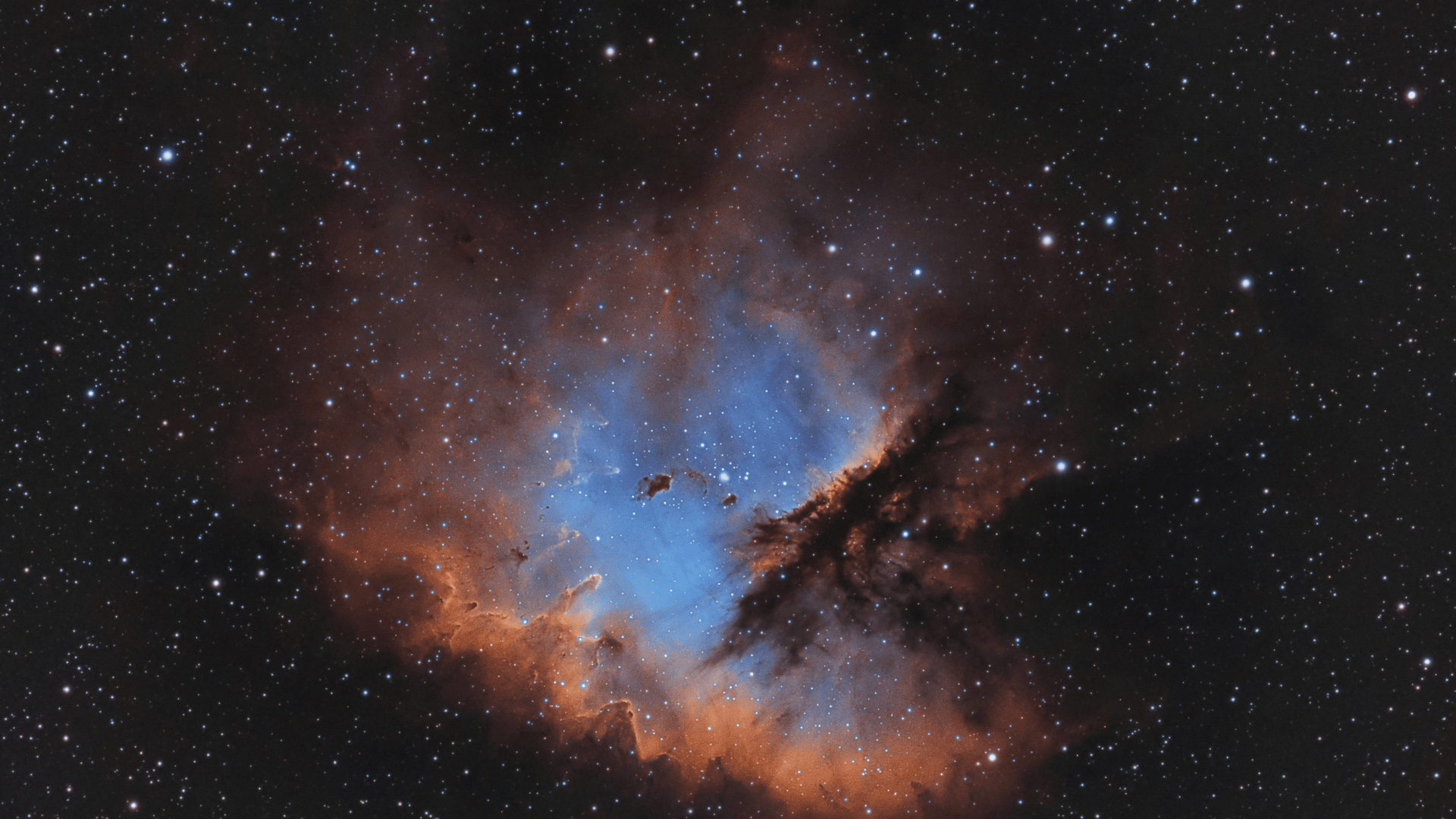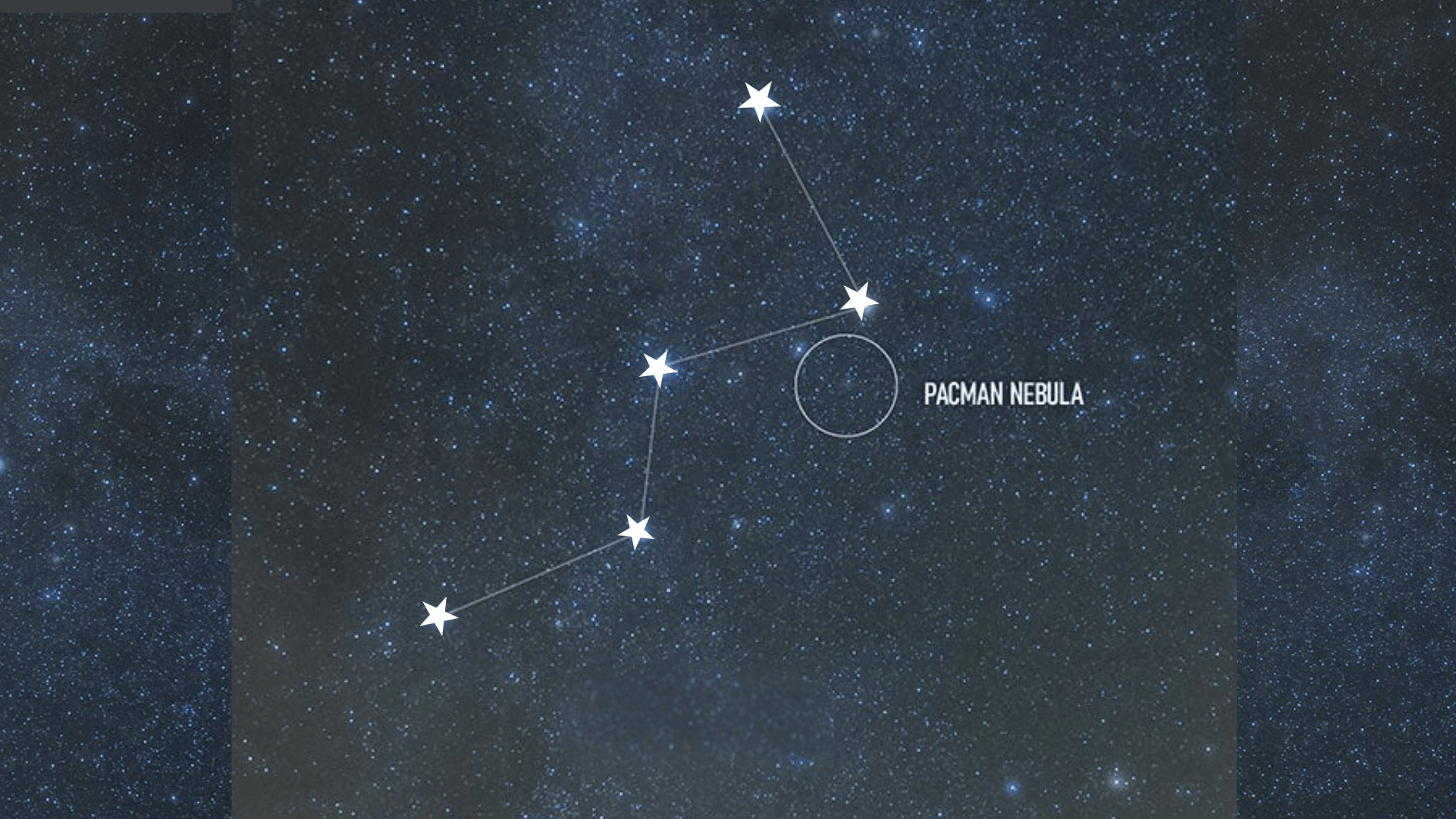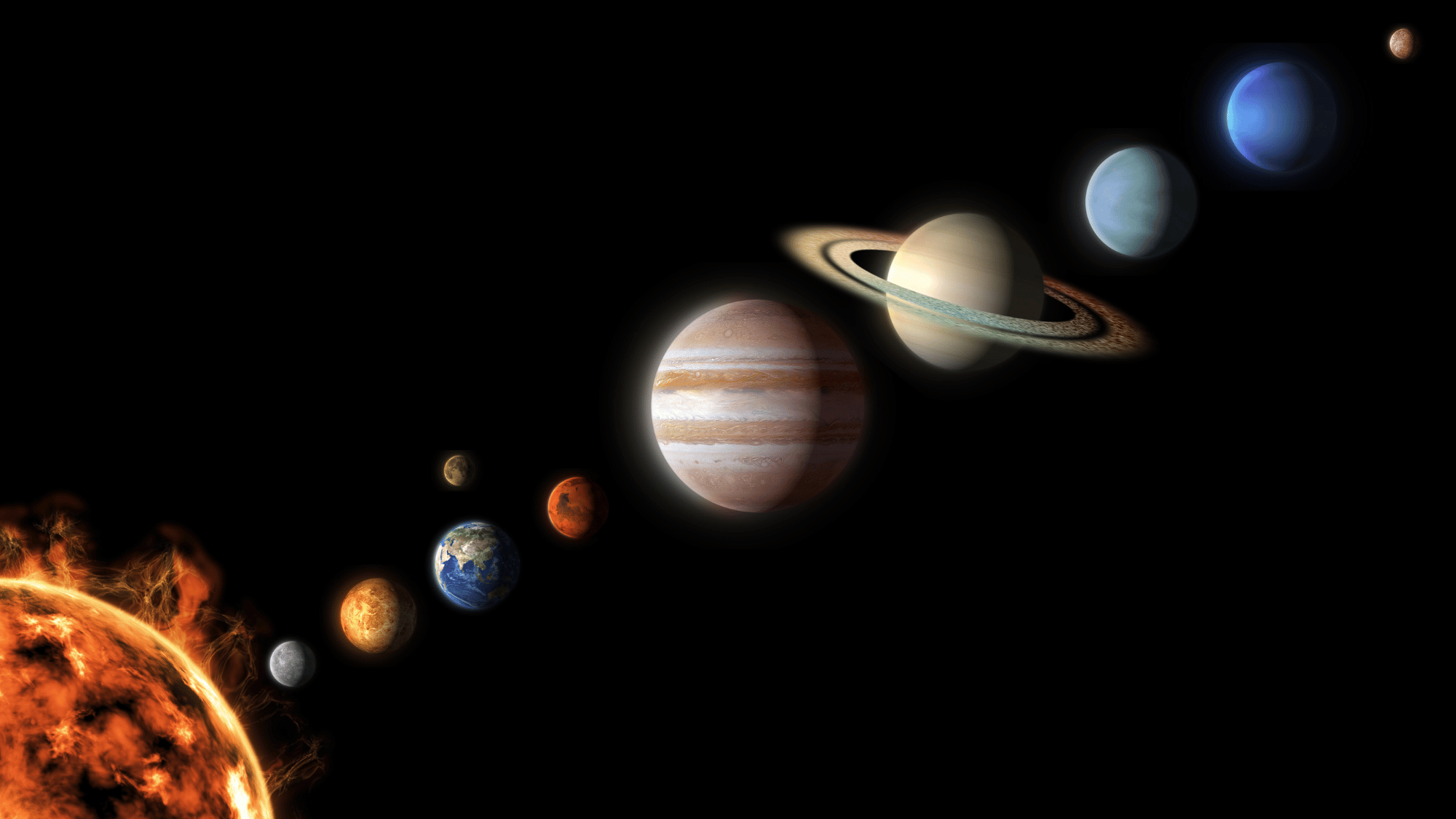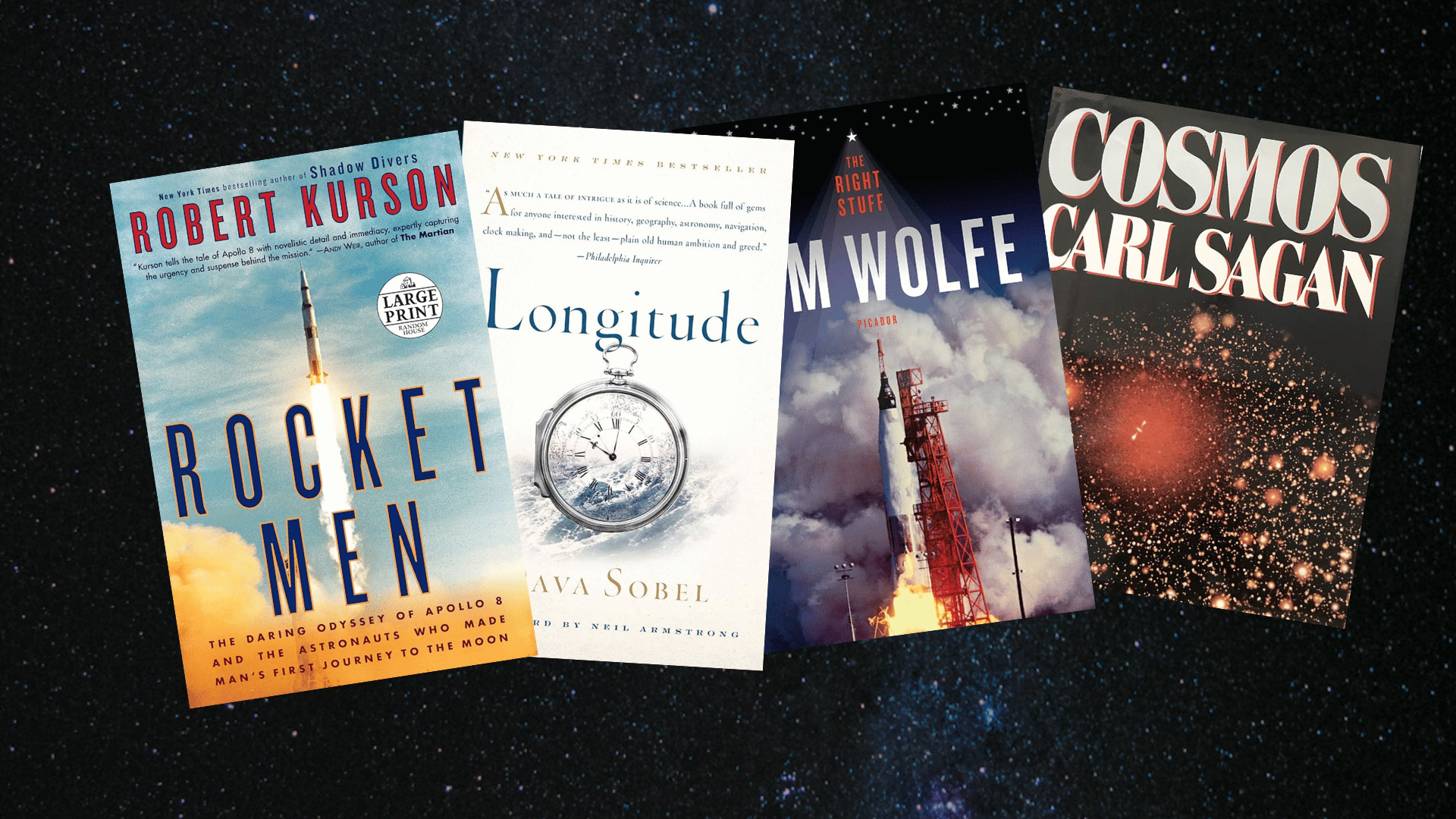The Pacman Nebula (NGC 281) is an emission nebula located in the constellation Cassiopeia from Earth.
At its heart lies the open star cluster IC 1590, whose young, hot stars illuminate the surrounding hydrogen gas, creating the nebula’s glowing red appearance.
Astronomers study NGC 281 to understand star formation, stellar winds, and the dynamics of interstellar matter, offering insights into how galaxies like our own evolve over time.
Keep reading to see how light, dust, and gravity combine to create the mesmerizing beauty of the Pacman Nebula.
What is the Pacman Nebula?
The Pac-Man Nebula is a glowing cloud of gas and dust located in deep space, famous for its uncanny resemblance to the classic video game character.
This celestial object is an active star-forming region where massive young stars illuminate surrounding hydrogen gas, creating vibrant red hues.
Dark dust lanes carve out the distinctive “mouth,” giving it an instantly recognizable appearance that bridges astronomy and pop culture nostalgia.
| Feature | Details |
|---|---|
| Common Name | Pacman Nebula |
| Constellation | Cassiopeia |
| Catalogued As | NGC 281, IC 1590 |
| Type | Emission Nebula with Open Star Cluster |
| Distance from Earth | ~9,200 light-years |
Why It’s Called the “Pac-Man” Nebula?

Image Source: en.wikipedia.org
Telescopes reveal the nebula’s circular shape with a distinctive dark wedge creating a Pac-Man-like appearance.
Thick cosmic dust curtains block glowing hydrogen gas behind them, forming a natural silhouette against the bright background.
Long-exposure photographs highlight this effect dramatically, showing vivid red and pink ionized gases contrasting sharply with dark dust lanes.
The playful nickname gained popularity among amateur astronomers and astrophotographers as digital imaging technology advanced.
Better equipment made the resemblance of the video game character impossible to ignore. This whimsical name follows astronomy’s tradition of creating memorable, relatable names for celestial objects.
Such nicknames help capture the public imagination and make space feel more accessible to everyday people interested in the cosmos.
Scientific Significance of the Pacman Nebula (NGC 281)
The Pacman Nebula, officially catalogued as NGC 281, is far more than just a visually stunning cloud of gas; it’s a cosmic laboratory where astronomers can observe the intricate processes that shape the life cycles of stars and galaxies.
1. A Stellar Nursery in Action
The Pac-Man Nebula serves as an active stellar factory where astronomers can observe star formation in real time.
Dense molecular clouds within it are collapsing under gravity to form new stars, with some still deeply embedded in their dusty cocoons.
Studying how different-mass stars form simultaneously within the same molecular cloud helps scientists understand the complex processes that govern stellar birth across the universe.
2. Feedback Effects and Stellar Winds
One of the most interesting aspects of the Pacman is its role in studying stellar feedback, the process by which newly formed massive stars influence their environment.
Massive young stars within NGC 281’s central cluster IC 1590 generate powerful stellar winds and intense ultraviolet radiation that dramatically reshape their surroundings.
This “feedback” process regulates future star formation by both dispersing star-forming material and triggering collapse in compressed regions.
3. The Role of Bok Globules
NGC 281 contains numerous Bok globules, small, dark, dense clouds of dust and gas visible as opaque silhouettes against the bright nebula.
These compact structures represent the earliest stages of star formation, where material is just beginning to collapse under its own gravity.
Some globules within the Pac-Man Nebula show signs of active collapse and contain embedded protostars, while others remain dormant.
4. A Window into Galactic Evolution
The Pac-Man Nebula exemplifies processes occurring throughout the Milky Way and other spiral galaxies, where star formation concentrates along spiral arms and in molecular cloud complexes.
By studying NGC 281’s structure, composition, and stellar population, astronomers gain insights into how galaxies convert raw material into stars.
It helps scientists build comprehensive models of galactic chemical evolution, star formation efficiency, and how galaxies maintain their stellar populations throughout cosmic history.
Names and Cultural Impact of Pacman Nebula
The Nebula 281 blends science and pop culture. Its playful nickname, ancient celestial roots in Cassiopeia, and striking imagery make it a cosmic symbol of how human creativity and curiosity intersect across time, technology, and the stars.
- Pop-Culture Name Origin: The Pac-Man Nebula gets its nickname from its resemblance to the iconic 1980s video game character Pac-Man.
- Mythological Connection: The nebula’s host constellation, Cassiopeia, is named after a vain queen in Greek mythology, punished for her arrogance.
- Symbol of Modern Astronomy: Its nickname bridges classic pop culture and cutting-edge science, making it a favorite in astronomy outreach.
- Cultural Recognition: It is frequently featured in space documentaries and digital art, inspiring curiosity about the universe.
- Legacy of Wonder: The Pac-Man stands as a symbol of how science, culture, and imagination come together in humanity’s exploration of the cosmos.
How to Observe the Pac-Man?
The Pacman has been observed across multiple wavelengths, each revealing unique insights.
| Telescope / Observatory | Wavelength Observed | Reveals |
|---|---|---|
| Hubble Space Telescope | Optical (Hα, OIII) | Fine structure of gas and dust; star clusters |
| Spitzer Space Telescope | Infrared | Embedded protostars and warm dust regions |
| Chandra X-ray Observatory | X-rays | Hot plasma and energetic stellar winds |
| ALMA & VLA | Radio | Cold molecular gas and early star formation regions |
From radio waves to X-rays, every wavelength adds a new brushstroke to the portrait of the Pacman Nebula, a masterpiece of cosmic creation painted in light.
Best Time and Location to View the Pacman
Viewing conditions for the Pac-Man depend on timing and location. Use the table below to find when and where it shines brightest in the sky.
| Factor | Details |
|---|---|
| Constellation | Cassiopeia |
| Best Season | September – January |
| Best Time | Midnight to early morning |
| Visible From | Northern Hemisphere (+20° to +90°) |
| Direction | Northeast to North |
| Equipment | Medium/large telescope with H-alpha filter |
| Tip | View under dark, clear rural skies |
Photography Tips for Capturing NGC 281
Capturing the beauty of the Pacman Nebula requires patience and the right astrophotography setup. With the right gear and settings, you can reveal its vibrant clouds of gas and dust in detail.
- Image during moonless nights with clear skies: Dark skies without moonlight maximize contrast and allow the nebula’s delicate features to stand out.
- Use precise polar alignment and autoguiding: Accurate tracking prevents star trailing during long exposures, keeping the nebula sharp across multiple frames.
- Shoot at a focal length between 500-1000mm: This range provides ideal framing to capture the nebula’s distinctive shape without losing surrounding context.
- Include calibration frames (darks, flats, bias): These reference images remove sensor artifacts, vignetting, and fixed-pattern noise for professional-quality results.
- In cooler temperatures (below 15°C/59°F): Cold weather reduces thermal noise in your camera sensor, producing cleaner long-exposure astrophotography.
- Process with dedicated astrophotography software: Tools like PixInsight or DeepSkyStacker are optimized for stretching nebula data and bringing out hidden emission details.
Conclusion
The Pac-Man Nebula stands as a remarkable testament to the universe’s capacity to inspire both scientific inquiry and cultural wonder.
NGC 281 perfectly bridges the gap between rigorous astronomical research and public engagement with the cosmos.
Whether you’re a seasoned astrophotographer, amateur stargazer, or simply curious about the night sky, this celestial wonder offers something extraordinary.
So grab your telescope, head to a dark-sky location, and experience the cosmic Pac-Man for yourself. The universe is waiting to be explored!


















